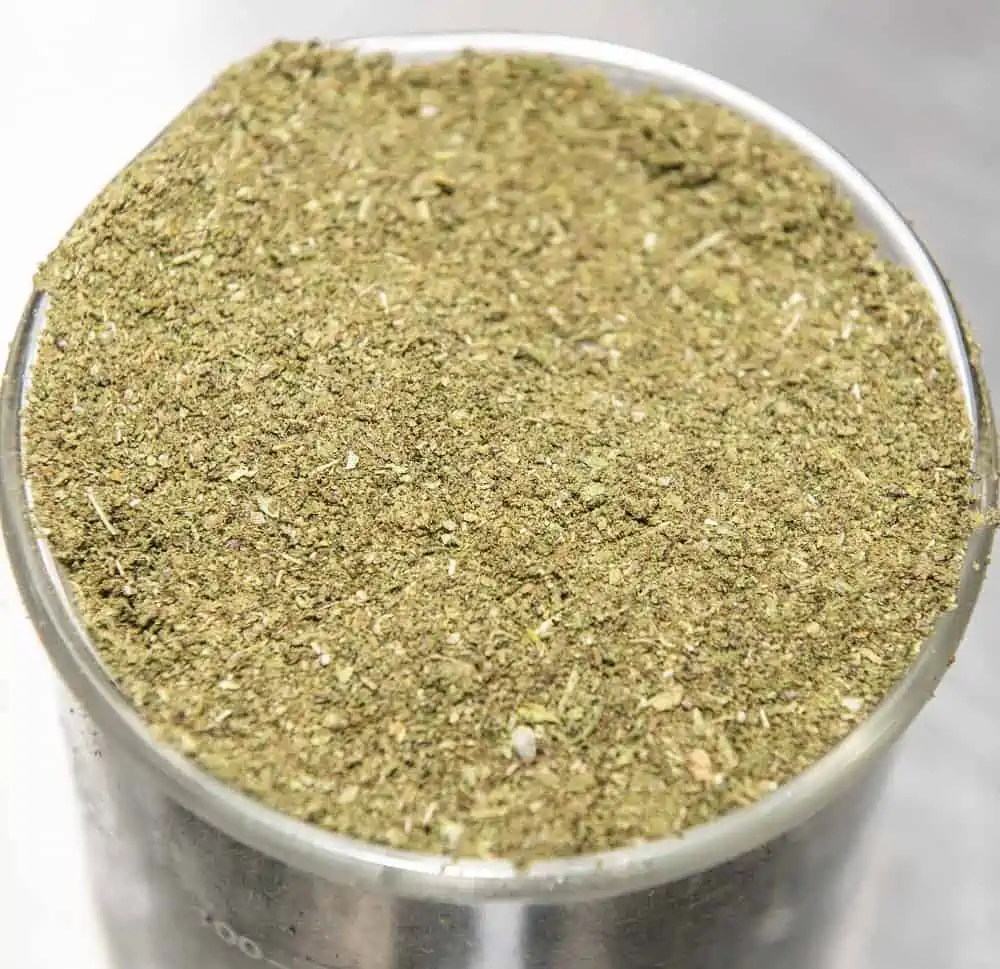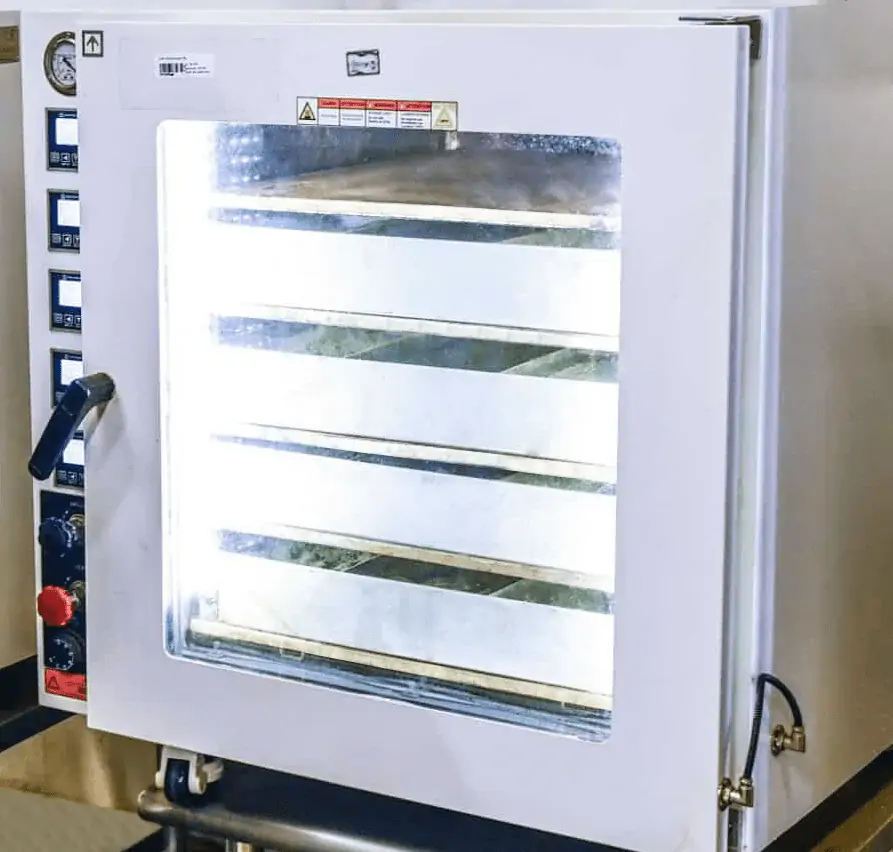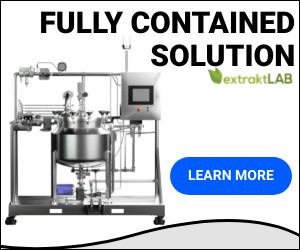In this article, we will examine the decarboxylation process of hemp and cannabis in order to make the best extract based products on the market. This guide is designed to explain decarboxylation in detail, how it plays a role in the extraction process, when it can be implemented in your process and the specifics of how to perform the process properly.
What is Decarboxylation?
Very few people outside of the extraction industry know that decarboxylation is a critical part of the process and that without it CBD would do absolutely nothing. There are various ways to perform decarboxylation and different times throughout the process that it can be done, but the one clear thing is that it has to happen in order for CBD extraction to be worthwhile. Let’s talk about what decarboxylation is and why it is so important in extraction.
So, what is decarboxylation? Decarboxylation, or “decarb” as it is often called in the industry, is the process of converting an acid version of a cannabinoid into its active version so that it can be absorbed by the body and its benefits can be utilized. This is most often done through heat exposure and is done so carefully during the extraction process in order to avoid damaging plant components that are otherwise desirable for an extract. But what’s the point? Won’t CBD or THC do the same thing anyway?
The short answer is, no. CBD and THC in their acid forms (THCA and CBDA) do have some purported benefits when they are consumed in this form; however, effects like psychoactivity and anxiety relieving properties will not be experienced until after you decarboxylate them. This is because the active THC or CBD will not be able to be absorbed by the body and pass the blood-brain barrier necessary to cause these effects. For that reason, decarbing hemp and cannabis is essential to making a quality product that customers want to use.
Not only is this important for the common CBD and THC cannabinoids, you can decarboxylate other cannabinoids like THCV, CBC, and CBN as well. While these cannabinoids are not psychoactive, there are some reported benefits to these cannabinoids when they are decarboxylated as well. Either way, the decarb process is a vital function of extraction overall.
What is the Process to Decarboxylate THCA and CBDA?
Though we’ve noted that heat is the primary factor in decarboxylation, there are variables that have to be considered depending on the cannabinoids you are trying to convert. For example, you are likely trying to target the decarboxylation of THCA as your primary cannabinoid when decarbing cannabis. And, you are probably targeting CBDA when decarbing hemp biomass. Each of these cannabinoids have specific temperatures in order to convert them to their active form.
Ideally, the best temperature range for decarbing your hemp or cannabis is around roughly 230-250 degrees fahrenheit. This is the perfect temp that will effectively activate your CBDA or THCA without combusting the biomass and ruining the product. Other cannabinoids like CBC, CBN and THCV may have different decarboxylation temperatures which is important to remember if you are targeting any of these particular cannabinoids too.
The time spent under heat is also important. The decarb process does not happen all at once. It does take some time under the correct temperatures to shed that carboxyl group and activate the cannabinoids into their desired form. Typically, the range of time that is best to decarboxylate biomass is 30-40 minutes. That said, the pressure of a vacuum oven can reduce the amount of time necessary for the decarb process to complete.
Of course, there are variables that can change the necessary times and temperatures necessary to completely decarboxylate the biomass. The cannabinoid concentration, moisture content, amount of biomass, etc. can all depend on the specific variables that can make a decarb process successful. It’s important to look into these specific variables in order to make sure your process is refined.

What is a Decarboxylation Reaction?
So, we’ve touched on the basics of what decarboxylation is and why it is important. Now let’s explain what happens on a reactionary level when cannabinoids are decarbed.
When it comes to hemp and cannabis, the cannabinoids that are desired are contained inside of the trichomes of the plant. These trichomes will also contain plant terpenes and other compounds that can be useful when formulating products from the plant. The trichomes are little mushroom-shaped structures that stick out of the plant flower and some of the leaves. They often look like sugar, or any other crystalline substance that covers the plant. This is where you will find the cannabinoids in need of decarboxylation.
On a molecular level, cannabinoid acids have 30 hydrogen atoms, 22 carbon atoms and four oxygen atoms. The purpose of the decarboxylation process is to heat the plant biomass so that the cannabolic acid will lose a single carboxyl group (-COOH) as carbon dioxide but keeping a single hydrogen atom. When the carboxyl group is lost, the actual mass of the cannabolic acid decreases. This change in mass is what activates the cannabinoid.
This reaction is important in order for CBD or THC to interact with the Endocannabinoid System (ECS). This is an entirely natural system in the human body that is tailor-made for cannabinoids like CBD and THC to interact with them. Unless you decarboxylate those cannabinoids, the endocannabinoid system would not be able to interact with them and the effects that are desired by the user are rendered useless.
Calculate Your Cannabis Business Operating Cost
Starting a Cannabis Business? Check out our Calculators and to analyse costs, estimated revenue, yield, initial investments and important metrics for your extraction business.
Decarboxylation Before or After Extraction?
We’ve covered that decarboxylation is essential, but should you decarb before, during or after extraction? Let’s take a look at the benefits of each and see what the best option is overall.
Before Extraction
First, let’s talk about the extraktLAB method of choice. Decarbing before the extraction process is a relatively common practice and has some evident advantages. One advantage is the removal of moisture. As you decarboxylate the plant biomass in a vacuum oven, you will effectively remove a lot of the normal moisture content that is naturally present in the biomass. This is beneficial because a higher moisture content will generally cause a lower extraction yield overall.
Also, it is possible for internal moisture to cause issues with the solvent itself that is used for the extraction process. This too can cause efficiency issues overall by potentially slowing down or hindering the extraction process altogether. Because of prolonged levels of heat under vacuum pressure, a vast majority of the moisture present in the biomass should evaporate making the downstream extraction process much more efficient.
There is also the factor of solubility that comes into play during extraction. For example, cannabinoids like THC are more soluble to a solvent like CO2 than their acid form like THCA. This means that during extraction, more of the targeted cannabinoids can be stripped from the biomass if a decarb process is performed prior to extraction. Higher efficiency means higher yields overall making pre-extraction decarb ideal.
Terpene collection
There is one more benefit to decarbing biomass pre-extraction that cannot be overlooked. Terpenes are a very important plant compound that give hemp and cannabis that desirable scent and flavor when ingested or inhaled. These natural components are so valuable that they are often collected or synthesized to be sold and added to extract products. One of the best times to collect these terpenes is during the extraction process.
Though this process has to be performed correctly, the collection process of terpenes during decarb is relatively straightforward. Terpenes are somewhat fragile when exposed to heat and the decarboxylation process can cause issues for them if not done properly. The way to do this is with a vacuum oven.
Think of a pressure cooker to imagine this. Under the direct pressure of a pressure cooker, it takes the food being cooked less heat over time to become fully cooked. The same principle applies to terpenes during the decarb process.
Without vacuum pressure, the amount of heat necessary to properly decarb a particular cannabinoid is too high for the terpenes to handle and will degrade them. This can cause a noticeably harsh scent and flavor in the biomass that can find its way into the extract and product at the end. With such high value on terps in a product, it is very likely that a customer will avoid a product with degraded terpenes.
However, with a vacuum oven setup, you can drastically reduce the heat and time necessary to decarb enough to the point that the terpenes evaporate without being damaged. In order to collect them, you need to have a cold trap connected to the oven. This is a chilled condenser that allows the evaporated terps to condense inside of the collection vessel. The result is unadulterated natural hemp or cannabis terps ready for sale or product formulation.
After Extraction
While we recommend the decarboxylation process be performed prior to extraction, there are some benefits to post extraction decarboxylation. The process remains the same and implements heat over time in order to activate the cannabinoids in the extract itself rather than the hemp or cannabis biomass. But, the difference in the benefits of post-extraction decarb is notable.
One of the benefits of decarbing your extracts after extraction is selective decarb. Although the acid forms of cannabinoids like CBDA and THCA are not psychoactive, they do have some of their own reported benefits that may be useful for certain consumers. In the case that those specific compounds are desired in a final product, they can be isolated in certain quantities so that not all of the THCA or CBDA will be converted into CBD or THC. That way both forms of the cannabinoid will be in the final product.
Also, if a terpene collection apparatus is not included in the decarb process, the natural terpenes in the plant will remain in the crude oil. This will often lead to an improved scent and color in the crude oil that is extracted from the biomass. These characteristics are certainly desirable and may be beneficial during formulation, or if selling wholesale crude oil to other extraction operations.
However, we do want to reiterate that this is not the decarb method that extraktLAB recommends. The overall yield that you will get from your extracted biomass will be lower due to the solubility of the cannabinoids you are trying to extract if you do not decarb before extraction. Not only that, you disregard collecting high quality terpenes ahead of time that can be sold wholesale, or formulated into your products.

Decarboxylation Without Heat
Thus far, we’ve talked about heat as the method of choice for decarboxylation in hemp and cannabis, but are there ways of decarboxylation without heat? Well, yes and no. While there are ways to decarb hemp and cannabis without active heat, they are not really practical for an extraction operation. That said, we’ll cover them for the sake of covering the topic.
Decarboxylation Through Time
Likely the most impractical way to decarb your cannabis is also the simplest: time. If you leave hemp or cannabis flower in the presence of oxygen long enough, it will eventually automatically begin to decarb as the oxygen begins to remove that carboxyl group in order to convert the cannabinoid acid into its active component.
It goes without saying that this is not a viable process for an extractor to rely on for his extraction process. For one, this method of decarbing the hemp or cannabis is not nearly as effective overall. By intervening with direct heat, the potency of the conversion process will be much more pronounced. If you just leave the biomass over time to decarb on its own, you will find that it is still less potent compared to a much shorter decarb time with outside heat.
Decarboxylation Through Acid
Another way that decarb can be performed is with a form of acid. Technically, a strong enough acid is capable of shedding the carboxyl group attached to an acidic form of THC or CBD. In essence, this will convert the acidic form of the cannabinoid into its active component. After the acid is removed from the biomass, the hemp or cannabis could technically be consumed and the active components will attach to the ECS receptors and cause the desired effects.
Again, this is an impractical method of decarbing for any respectable extraction operation. Because you are using a strong enough acid to decarb the biomass, you would have to find a way to remove that acid from the biomass in its entirety before the extraction process. This is because a strong enough acid to decarb hemp or cannabis is also strong enough to burn skin! This is clearly an issue when you are trying to make products for human consumption.
So, if you are trying to remove that acid, you would either have to leave the acid soaked biomass out for a long enough period of time that it evaporates, or use a remediation process in order to remove it before extraction. In either case, you either add an outlandish amount of processing time to your operation, or an extra remediation process. It’s clear that the only viable option for full scale extraction is by applying heat.
Get The Latest Update on Cannabis and Hemp Industry
Need insights and updates for latest news in Hemp Industry? Check out our Podcast as we share Start up secrets, Key Tips For Operational Excellence and other useful information you need to know.
Conclusion: Importance of Decarboxylation in CBD and the Hemp Industry
So, we’ve established that not only is decarboxylation important; it’s entirely essential. While there are various times during the process that you can perform decarb, it should be clear that the benefits of decarbing before the extraction process far outweigh the other options. Not only does this drastically improve your extraction process, it also allows you to capture those precious terps for sale or product formulation. It’s a win-win.
The decarb process needs to be performed in optimal conditions in order to fully reap the benefits of the outcome. This is why using vacuum ovens with a cold trap apparatus in order to collect terpenes is the best method that extraktLAB uses. While we often don’t see competition using this method, we highly recommend it to anyone in the industry who wants to improve the quality of their extraction process, and retain the valuable products of terpenes early on in the process.
If you want to step up your decarb game, we are here to help. Not only can we provide you with a full-scale decarboxylation solution coupled with the terpTRAP terpene recovery system, we also have plenty of expert information to help you optimize your process from decarb to distillation and every step in between. Reach out today to get the best information in the industry!


